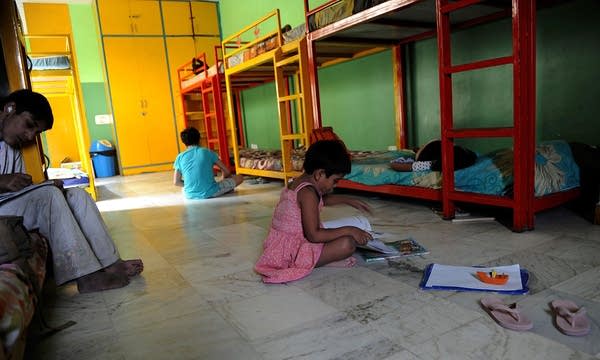UN reports progress against HIV in poor countries

By LAURAN NEERGAARD, AP Medical Writer
WASHINGTON (AP) -- A record 8 million people with HIV in poor countries were receiving potentially life-saving treatment last year and new infections among children are dropping steadily, the United Nations said Wednesday, in an encouraging report on the AIDS epidemic.
The report comes days before the world's largest AIDS conference opens in the nation's capital with the goal of finally "turning the tide" on the epidemic, citing research that's possible to dramatically stem the spread of the HIV virus.
"The world deserves no less than a future of zero new HIV infections, zero discrimination and zero AIDS-related deaths," Michel Sidibe, executive director of UNAIDS, the Joint United Nations Program on HIV and AIDS, wrote in Wednesday's report.
Create a More Connected Minnesota
MPR News is your trusted resource for the news you need. With your support, MPR News brings accessible, courageous journalism and authentic conversation to everyone - free of paywalls and barriers. Your gift makes a difference.
The world is nowhere near that ideal yet: Some 34.2 million people are living with the AIDS virus globally, including 2.5 million who became infected last year. And 1.7 million died in 2011. New infections and deaths dropped slightly last year.
But the report found progress toward some interim goals.
More than 8 million people with HIV in poor and middle-income countries received AIDS medications last year, up from 6.6 million in 2010, said the report from UNAIDS, the United Nations program on HIV and AIDS. At that rate, the world should meet a U.N. goal of having 15 million people in those countries on treatment by 2015, the report found.
Increasing access to treatment doesn't just save the lives of people living with HIV. New research shows that treating them early so they stay healthy also makes them far less likely to infect others, a strategy called "treatment as prevention."
"We need to get that number up as rapidly as possible," said Chris Collins of amFAR, the Foundation for AIDS Research, who called the 2011 treatment increase unexpectedly high. "If we can get to scale with AIDS treatment, we're not only saving lives but we're preventing infection and beginning to end this epidemic."
Another key goal: To nearly eliminate new HIV infections among children by 2015, including transmission during pregnancy.
About 330,000 children were newly infected in 2011, a 24 percent drop since 2009, the report found. Nearly 60 percent of the 1.5 million pregnant women living with HIV in poor countries received effective anti-AIDS medications last year, to lower their chances of infecting their babies.
